Abstract
Six college undergraduates received programmed concept training on three kinds of intraverbal relations. These relations involved definition, exemplification, and example identification questions. The experimenter presented the questions, the subject answered them in writing, and the experimenter provided specific corrective consequences. After completing the training on a concept, the subject immediately received a test on the concept. The test included novel questions similar to the kind used in training (extension tasks) and question types that were not used in training but which were also considered intraverbal relations (transfer tasks). Training results indicated rapid, errorful responding on example identification tasks and slow, accurate responding on exemplification and definition tasks. Test results indicated rapid, errorful responding on example identification extension tasks; slow, accurate responding on exemplification extension tasks; and slow, errorful responding on definition extension tasks. In testing, differential responding occurred on transfer tasks as a function of the kind of intraverbal training received, and substantially lower levels of performance were obtained on transfer tasks than on extension tasks. It appears that the intraverbal can be subdivided into more specific categories of operants.
Keywords: verbal behavior, programmed instruction, transfer of learning, written answers, undergraduates
Full text
PDF

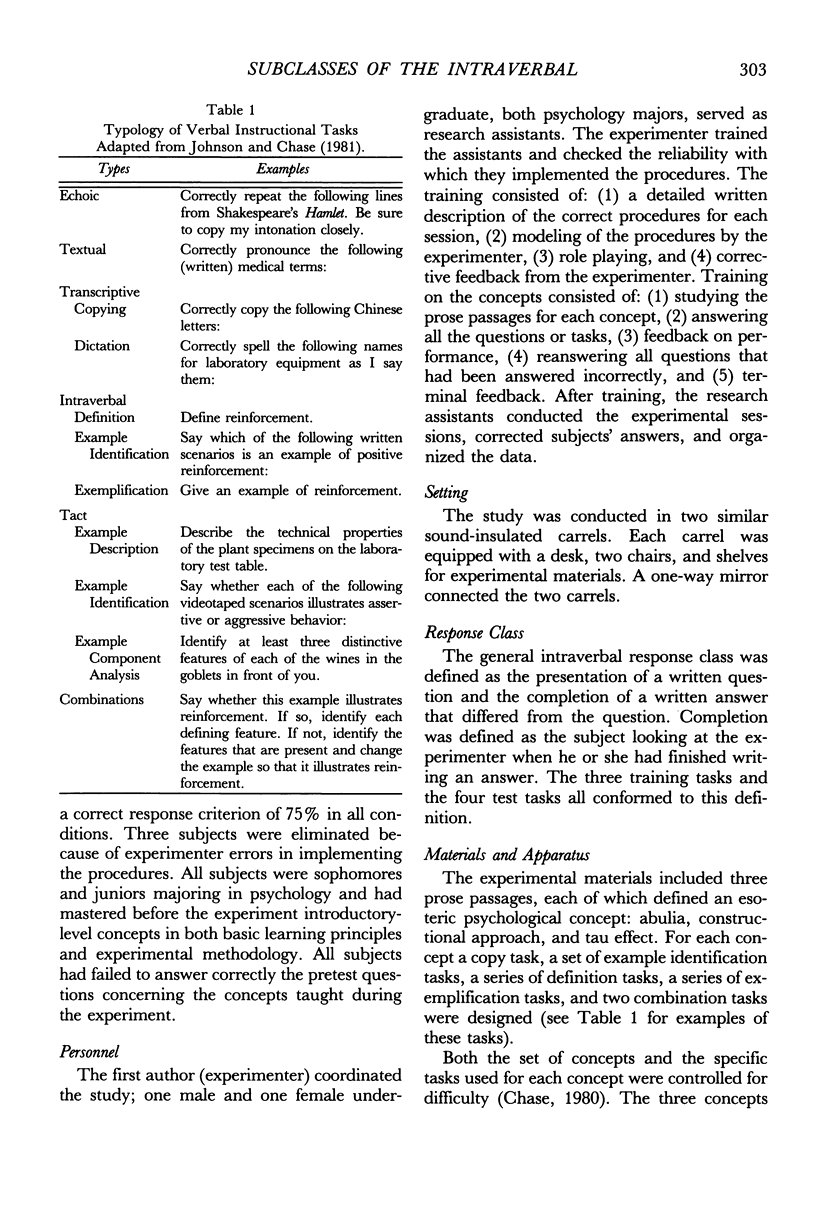
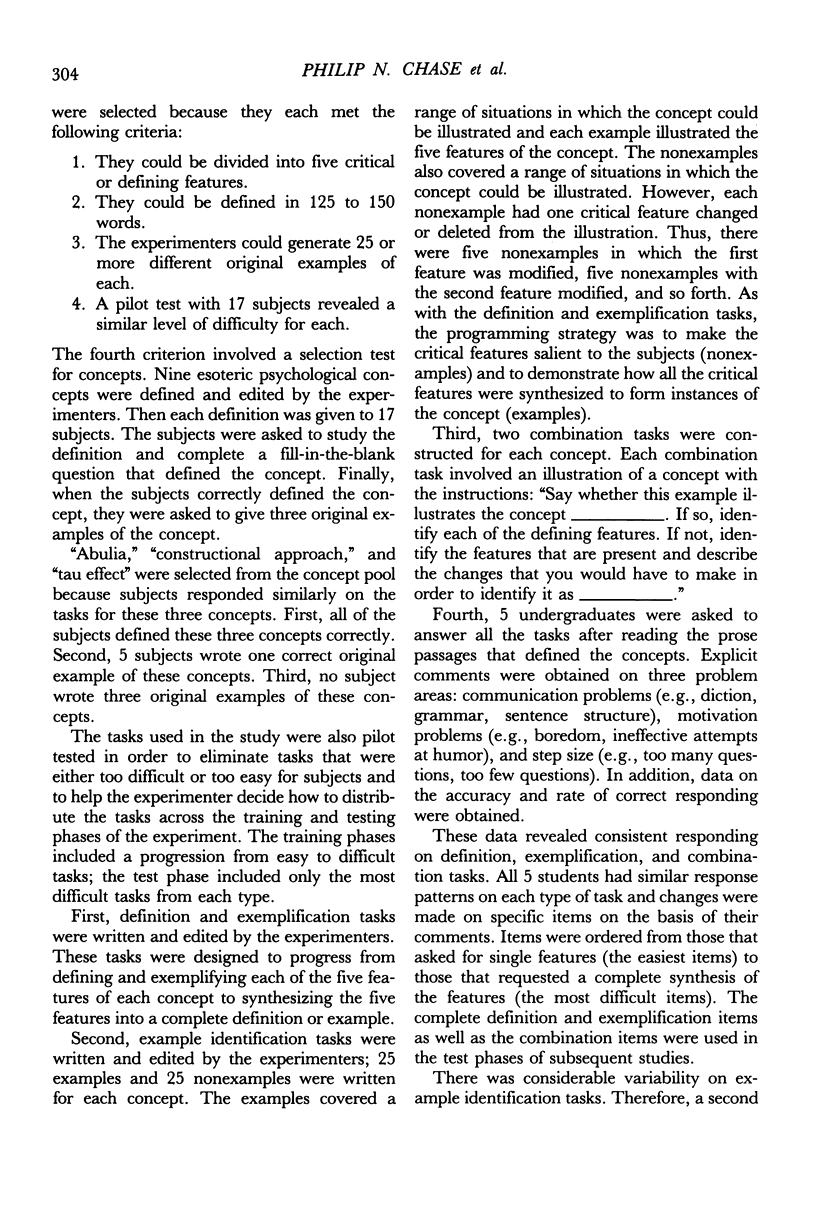

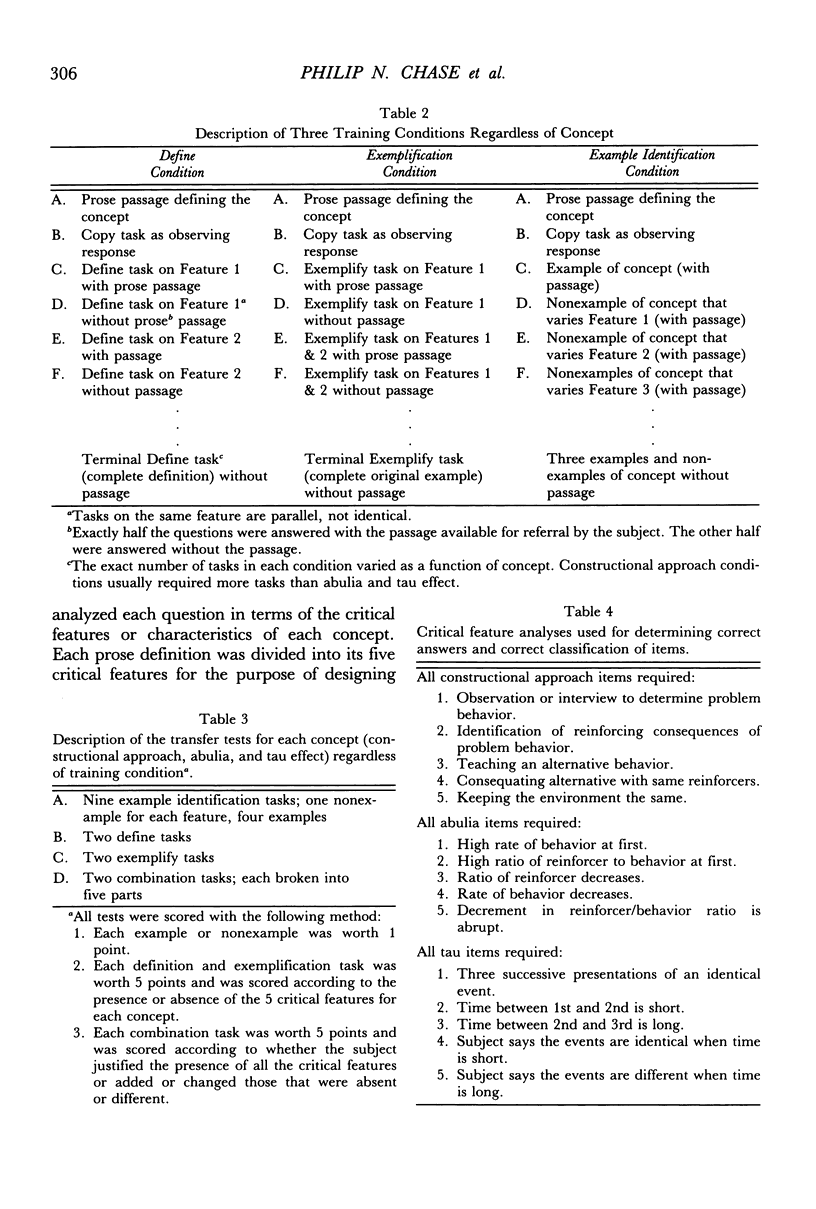
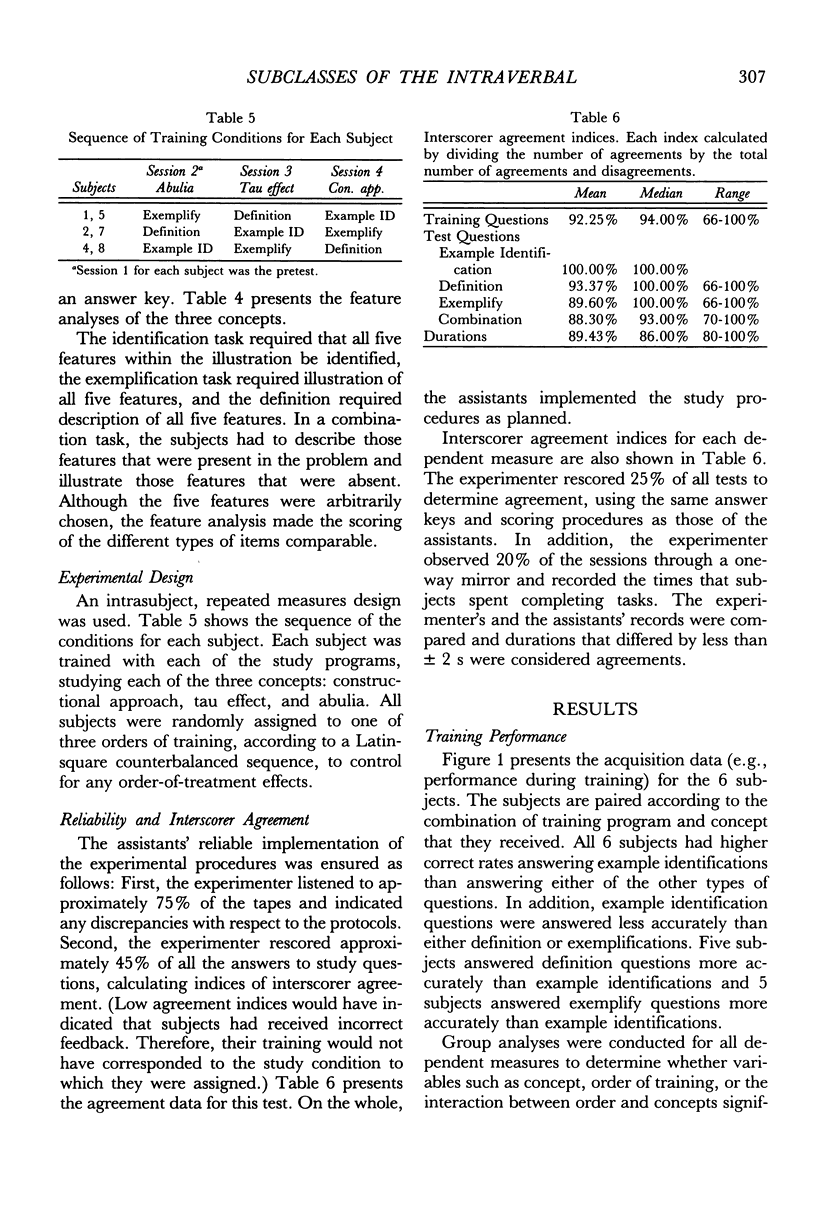

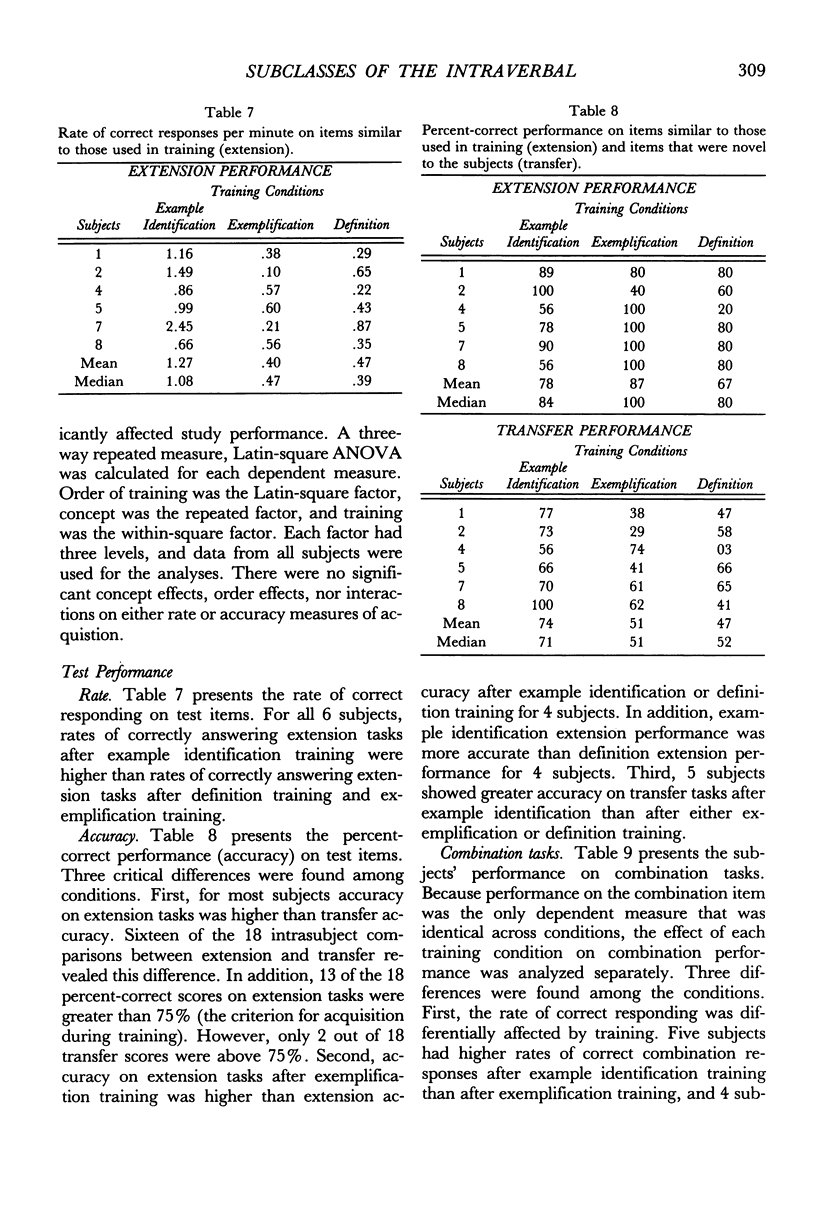
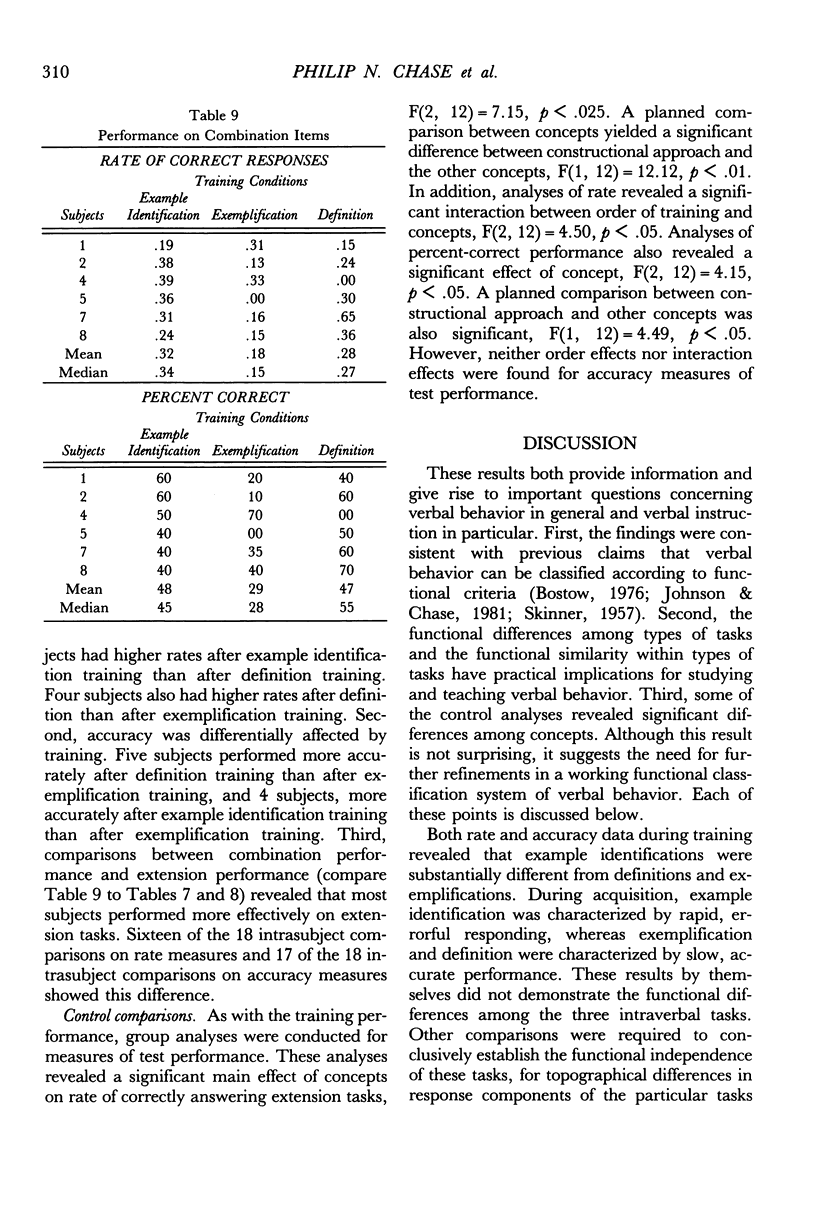
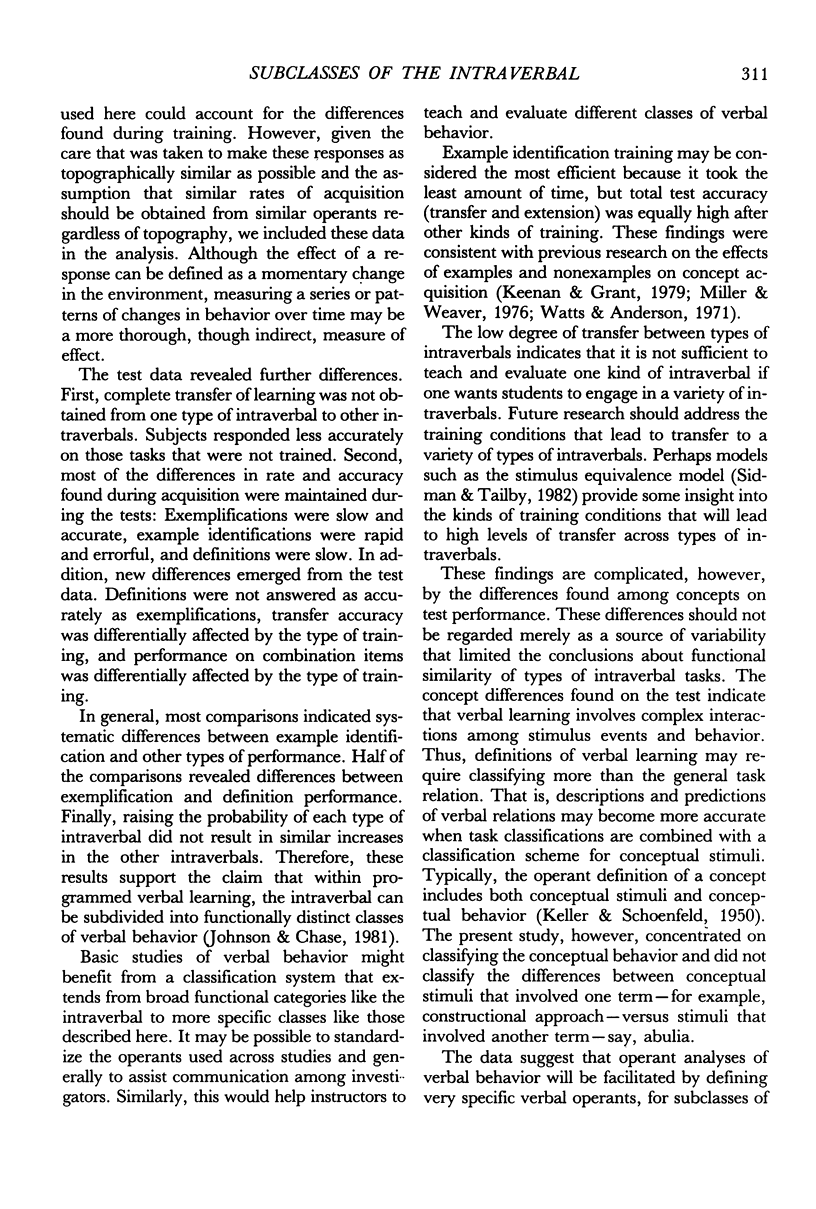
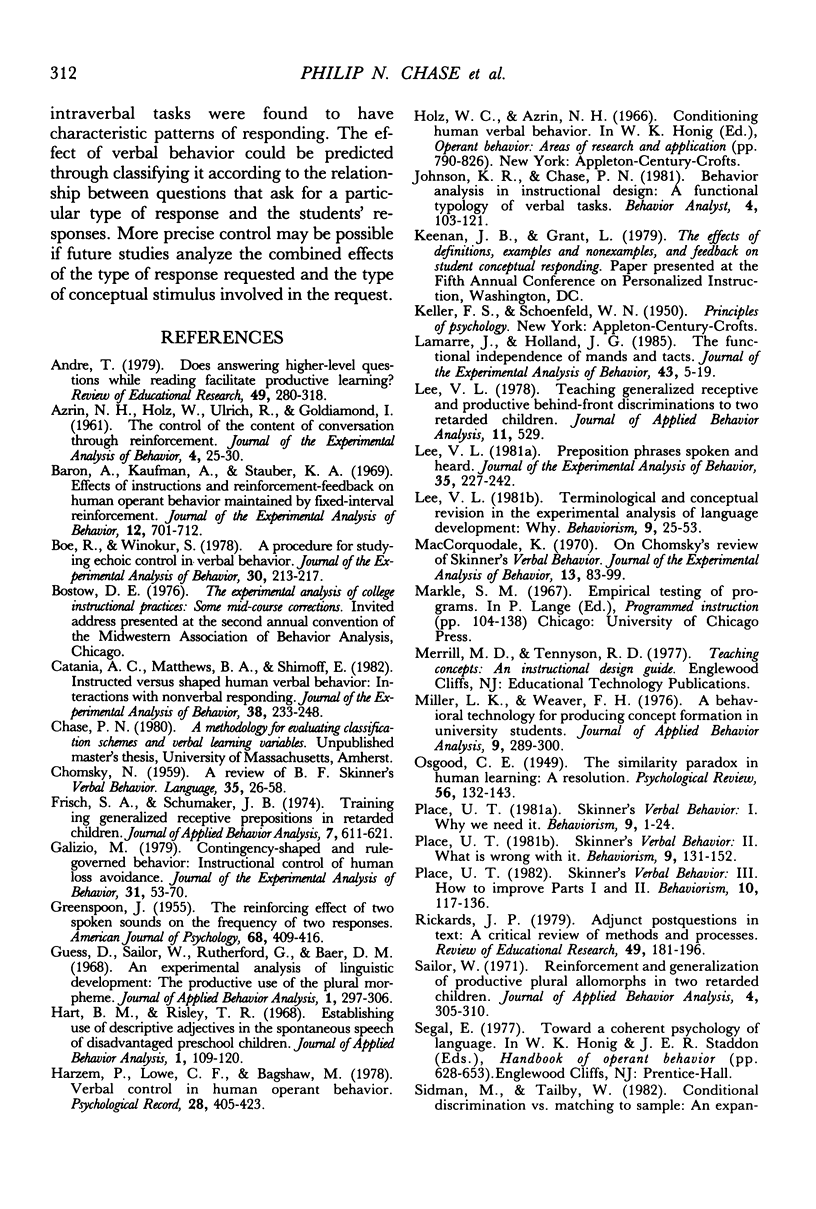
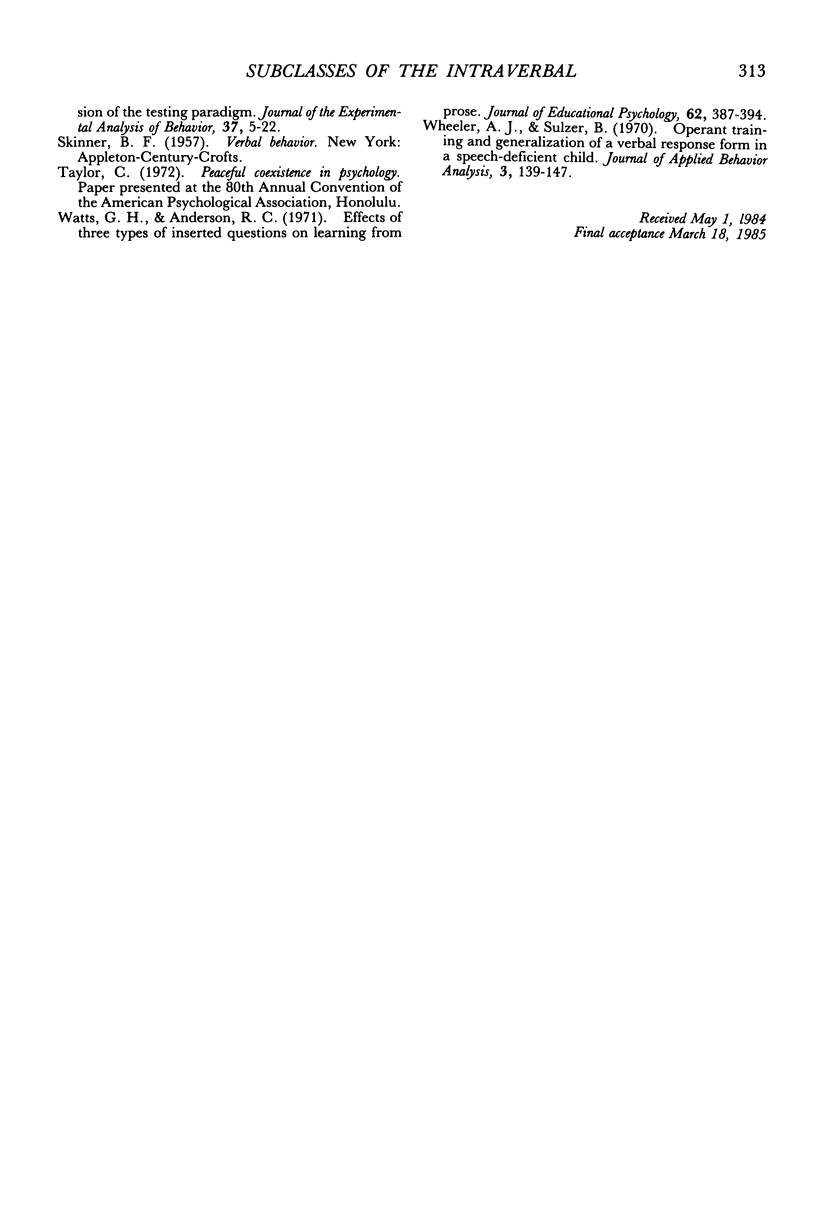
Selected References
These references are in PubMed. This may not be the complete list of references from this article.
- AZRIN N. H., HOLZ W., ULRICH R., GOLDIAMOND I. The control of the content of conversation through reinforcement. J Exp Anal Behav. 1961 Jan;4:25–30. doi: 10.1901/jeab.1961.4-25. [DOI] [PMC free article] [PubMed] [Google Scholar]
- Baron A., Kaufman A., Stauber K. A. Effects of instructions and reinforcement-feedback on human operant behavior maintained by fixed-interval reinforcement. J Exp Anal Behav. 1969 Sep;12(5):701–712. doi: 10.1901/jeab.1969.12-701. [DOI] [PMC free article] [PubMed] [Google Scholar]
- Boe R., Winokur S. A procedure for studying echoic control in verbal behavior. J Exp Anal Behav. 1978 Sep;30(2):213–217. doi: 10.1901/jeab.1978.30-213. [DOI] [PMC free article] [PubMed] [Google Scholar]
- Catania A. C., Matthews B. A., Shimoff E. Instructed versus shaped human verbal behavior: Interactions with nonverbal responding. J Exp Anal Behav. 1982 Nov;38(3):233–248. doi: 10.1901/jeab.1982.38-233. [DOI] [PMC free article] [PubMed] [Google Scholar]
- Frisch S. A., Schumaker J. B. Training generalized receptive prepositions in retarded children. J Appl Behav Anal. 1974 Winter;7(4):611–621. doi: 10.1901/jaba.1974.7-611. [DOI] [PMC free article] [PubMed] [Google Scholar]
- GREENSPOON J. The reinforcing effect of two spoken sounds on the frequency of two responses. Am J Psychol. 1955 Sep;68(3):409–416. [PubMed] [Google Scholar]
- Galizio M. Contingency-shaped and rule-governed behavior: instructional control of human loss avoidance. J Exp Anal Behav. 1979 Jan;31(1):53–70. doi: 10.1901/jeab.1979.31-53. [DOI] [PMC free article] [PubMed] [Google Scholar]
- Guess D., Sailor W., Rutherford G., Baer D. M. An experimental analysis of linguistic development: the productive use of the plural morpheme. J Appl Behav Anal. 1968 Winter;1(4):297–306. doi: 10.1901/jaba.1968.1-297. [DOI] [PMC free article] [PubMed] [Google Scholar]
- Hart B. M., Risley T. R. Establishing use of descriptive adjectives in the spontaneous speech of disadvantaged preschool children. J Appl Behav Anal. 1968 Summer;1(2):109–120. doi: 10.1901/jaba.1968.1-109. [DOI] [PMC free article] [PubMed] [Google Scholar]
- Lamarre J., Holland J. G. The functional independence of mands and tacts. J Exp Anal Behav. 1985 Jan;43(1):5–19. doi: 10.1901/jeab.1985.43-5. [DOI] [PMC free article] [PubMed] [Google Scholar]
- Lee V. L. Prepositional phrases spoken and heard. J Exp Anal Behav. 1981 Mar;35(2):227–242. doi: 10.1901/jeab.1981.35-227. [DOI] [PMC free article] [PubMed] [Google Scholar]
- Miller L. K., Weaver F. H. A behavioral technology for producing concept formation in university students. J Appl Behav Anal. 1976 Fall;9(3):289–300. doi: 10.1901/jaba.1976.9-289. [DOI] [PMC free article] [PubMed] [Google Scholar]
- doi: 10.1901/jaba.1978.11-529. [DOI] [PMC free article] [Google Scholar]
- doi: 10.1901/jeab.1970.13-83. [DOI] [PMC free article] [Google Scholar]
- Sailor W. Reinforcement and generalization of productive plural allomorphs in two retarded children. J Appl Behav Anal. 1971 Winter;4(4):305–310. doi: 10.1901/jaba.1971.4-305. [DOI] [PMC free article] [PubMed] [Google Scholar]
- Sidman M., Tailby W. Conditional discrimination vs. matching to sample: an expansion of the testing paradigm. J Exp Anal Behav. 1982 Jan;37(1):5–22. doi: 10.1901/jeab.1982.37-5. [DOI] [PMC free article] [PubMed] [Google Scholar]
- Wheeler A. J., Sulzer B. Operant training and generalization of a verbal response form in a speech-deficient child. J Appl Behav Anal. 1970 Summer;3(2):139–147. doi: 10.1901/jaba.1970.3-139. [DOI] [PMC free article] [PubMed] [Google Scholar]


